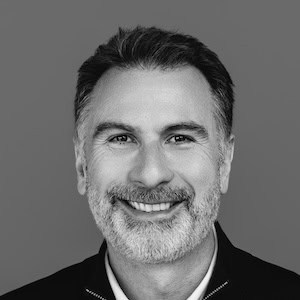-
Clearing the Way for Clean Energy Investment in Emerging Markets
Investment in renewables in emerging markets is growing, helped by the combination of high energy demand with declining prices, and banks in OECD nations are playing a larger role in financing the projects. Still, despite the growth opportunities, there are several key obstacles confronting those looking to invest in clean energy. Ankit Mishra discusses ways to reduce some of these challenges.
- Tags
- renewable energy
-
From Kentucky to Kenya: Celebrating Financial Inclusion’s Potential – And Facing its Limitations
The financial inclusion industry is arguably more innovative and attuned to the needs of low-income clients than ever before. But how much of an impact can it make in a world where the problems of poverty and income inequality increasingly plague not only low-income countries, but wealthy ones too? We discuss the issue as NextBillion's Financial Inclusion Month concludes.
- Categories
- Uncategorized
-
Energy Solutions Shouldn’t Just Tick Boxes, They Should Transform Communities
Simple electrification around the world, without the existence of a suitable ecosystem, has not led to transformation, writes Sarah Alexander of the SELCO Foundation. That ecosystem needs to be created and strengthened by a host of local stakeholders to complement efforts of last-mile energy enterprises to transform the lives of the poor – and understanding the demand for the solution is critical.
- Categories
- Energy, Impact Assessment
-
Building Tools to Measure How, and How Much, Consumers Benefit from Financial Inclusion
It's easy to affirm that financial inclusion is increasing. It's more difficult – because of a lack of reliable and actionable tools – to determine how adults derive value from financial inclusion. To address that need, insight2impact recently developed and tested a needs measurement framework concept that takes users’ actual usage patterns into consideration.
- Categories
- Uncategorized
-
Three Reasons Financial Health Matters – And Not Just for the Underserved
Forty-three percent of Americans struggle to pay bills and make credit payments, while 23 percent of workers making $50,000 to $99,999 a year are living paycheck-to-paycheck, and underserved Americans spend $141 billion in fees and interest to meet their financial needs. That's why, as the Center for Financial Services Innovation puts it, "Financial health matters to all of us." Today (June 27) CFSI and other mission-based organizations are celebrating #FinHealthMatters Day, to highlight what we all can do to improve financial health.
- Categories
- Technology
-
Mobile Podcasts: A Cost-Effective Way to Boost Financial Literacy in India
As a reader of this blog, you likely find it easy to read and understand instructions about basic banking processes, and breeze through simple transactions like ATM withdrawals. But what about those who lack literacy skills, or who are just getting introduced to the world of finance? Mobile phone podcasts, particularly those delivered to targeted audiences in their language, can be a solution. With the potential to reach more than 1 billion mobile subscribers in India, mobile phone podcasts could bring financial literacy to underserved communities.
- Categories
- Technology
-
It’s Time to Match Tools with Our Understanding of Consumers and Financial Inclusion
Established in 2015 as a resource centre to help find new ways to use data to assist the financial inclusion community, insight2impact recently released its "i2i Measurement Framework Note series." The document introduces a new theory and set of measurement frameworks designed to help stakeholders achieve their good intentions and is underpinned by three key insights.
- Categories
- Uncategorized
-
Seeking the Anti-Poverty Holy Grail: Can a ‘Trust Mark’ Boost Microfinance’s Social Impact?
In an effort to find which microfinance practitioners are most successfully alleviating poverty, Truelift – with the help of other microfinance rating agencies and technical experts – designed an assessment tool and beta-tested it on nine institutions around the world. The result, essentially, is a global “trust mark” for anti-poverty action. Organizers are looking for opportunities to use the tool to support assessment of a variety of service providers.
- Categories
- Uncategorized










